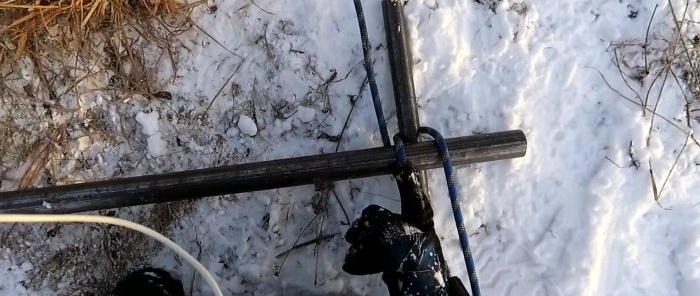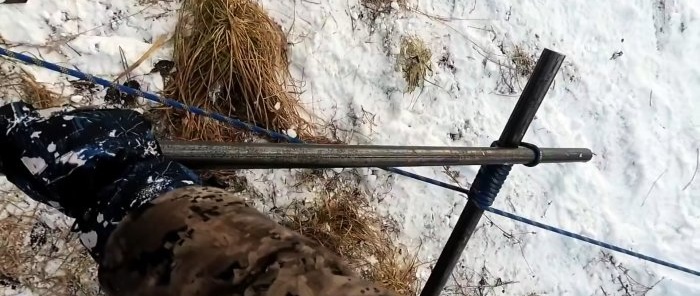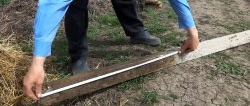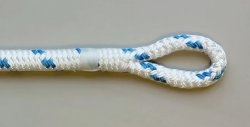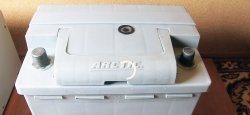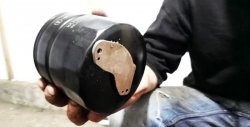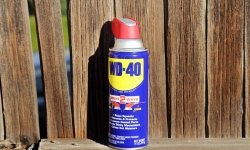It may happen that a standard electric or mechanical winch installed on a vehicle will fail or break down at the most inopportune moment. The proposed hand winch, which is called a helicopter due to the principle of its operation, is assembled from two metal tubes of the same or different diameters with a length of at least one meter and a rope, preferably with a round section, since it is easier and more convenient to work with. If the vehicle is stuck in or near the forest, the pipes can be replaced with two wooden stakes, cut down with an axe.
How to pull out a stuck vehicle without a winch
We fix one end of the rope to the vehicle, the other to the tree. For safety, after hooking onto a tree or vehicle, we wrap pieces of tarpaulin or old outerwear such as a jacket or sweatshirt onto the rope. This will protect us if the rope comes loose or breaks during tension.
At first, we do not tighten the rope too much; we leave some slack. This is necessary in order to put the rope on the levers without much effort.We drill a hole at the end of one lever and attach a wire ending in a hook.
Approximately in the middle, we pull the rope towards us, place one lever parallel to the rope, and the other - transversely on the rope and the lower lever, and closer to their edges. We wind the rope around the upper lever from the side that is longer.
We pass the rope under the bottom of the upper lever, grab it and also pass it under the bottom of the lower lever. Moreover, the part of the rope going to the vehicle must intersect the loop on the upper lever and be located to the left of it.
Now we turn the lower pipe 180 degrees parallel to the rope towards the tree, while it is stretched and, so that the pipe does not return to its original position, we fasten it with a hook on the wire to the rope.
Next, we also turn the second lever 180 degrees in the direction transverse to the rope. To further tighten the rope and shift the vehicle, release the lever secured with a wire loop to the rope and turn it 180 degrees towards the vehicle and re-attach it to the rope.
And so alternately, turning the levers, we pull out the vehicle stuck in the mud or hole. As the rope is tensioned, the wishbone, due to elastic forces in the rope, tries to rotate in a plane parallel to the ground. To prevent this, it must be supported with your feet.
If the vehicle is heavy, then the levers should be longer to reduce the effort applied to them. As the diameter of the levers increases, the speed of movement of the vehicle increases, as does the force on the levers.



